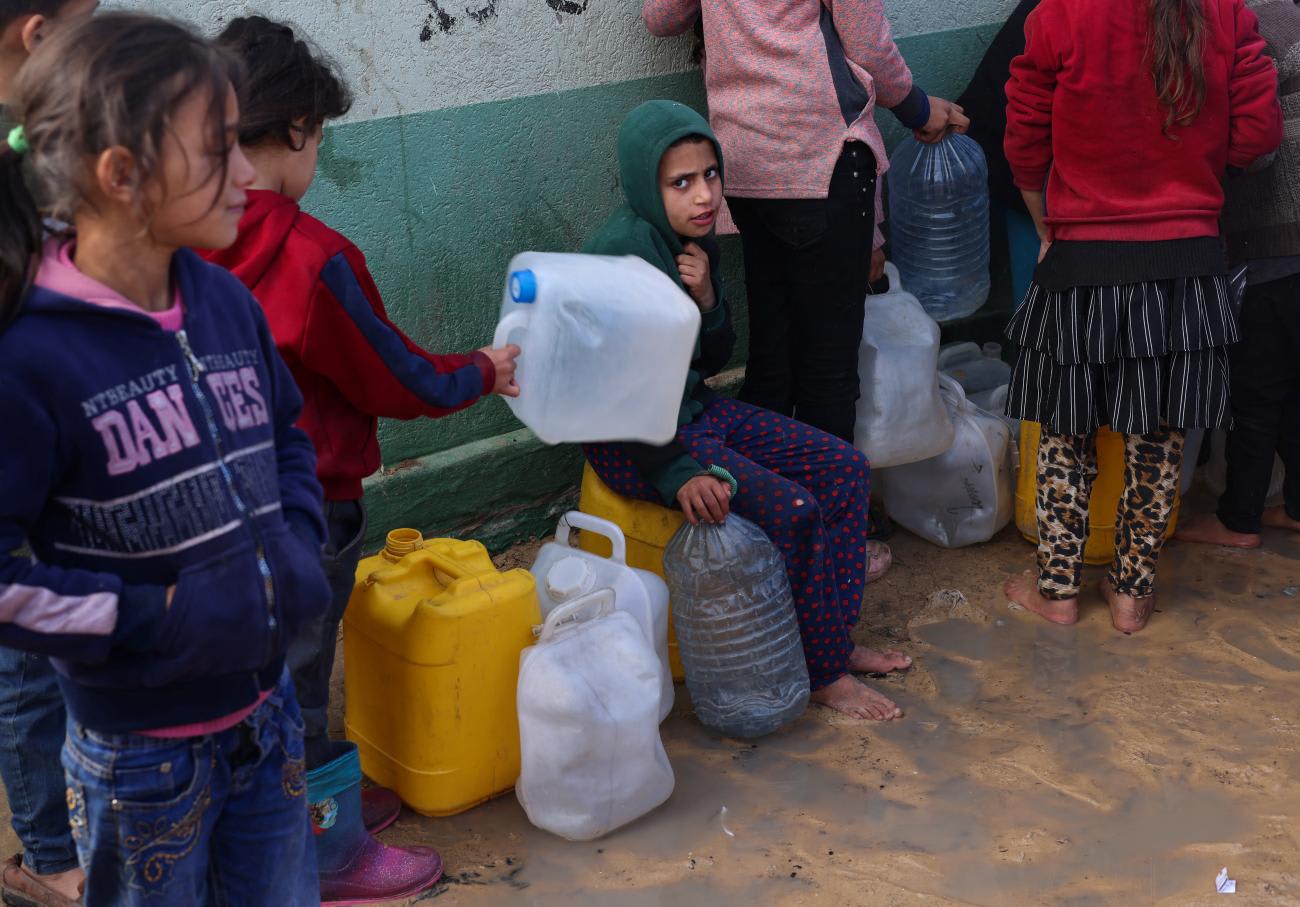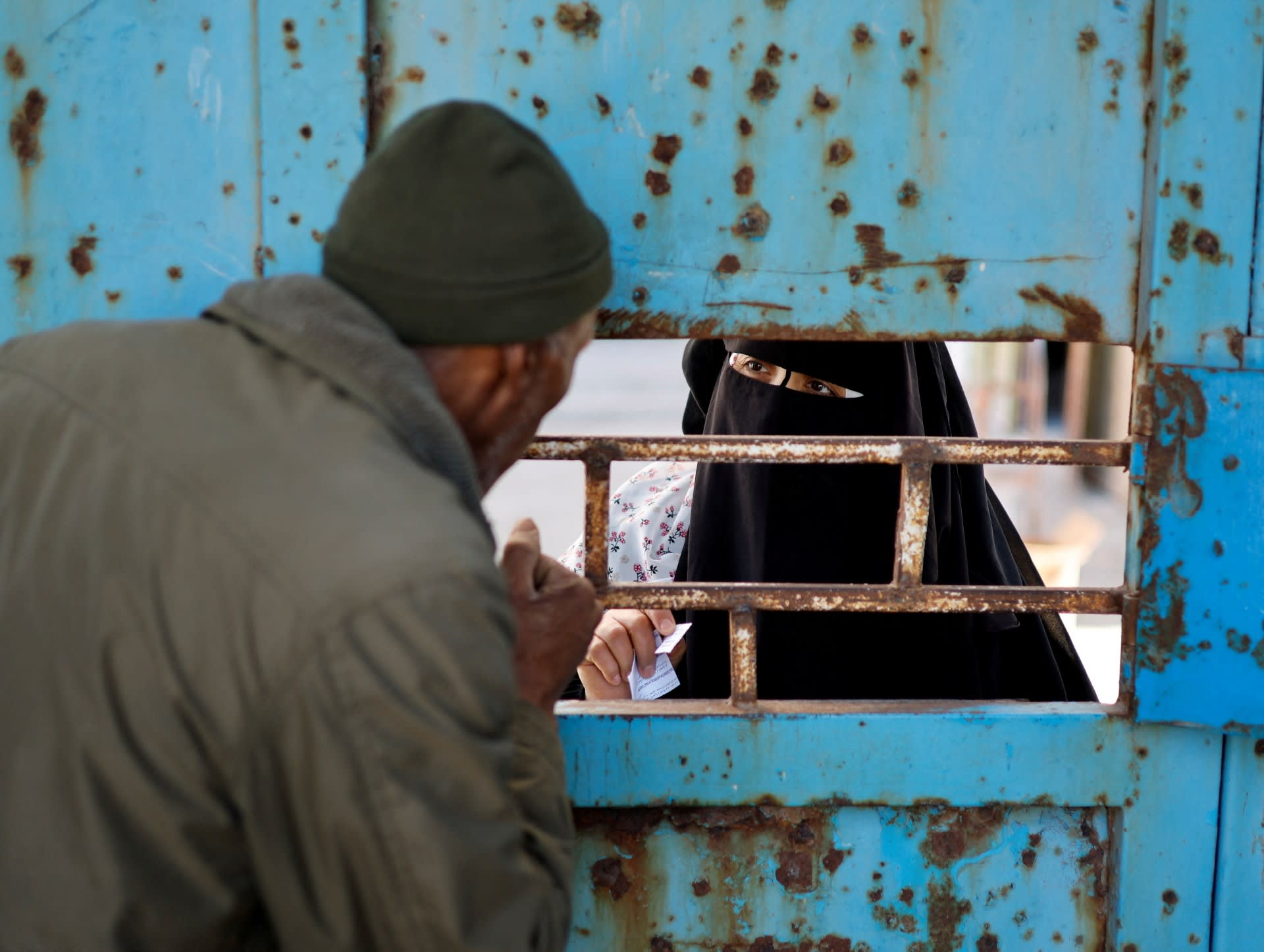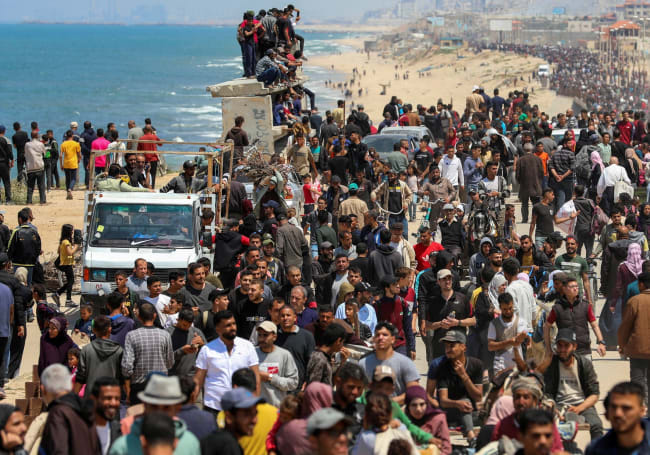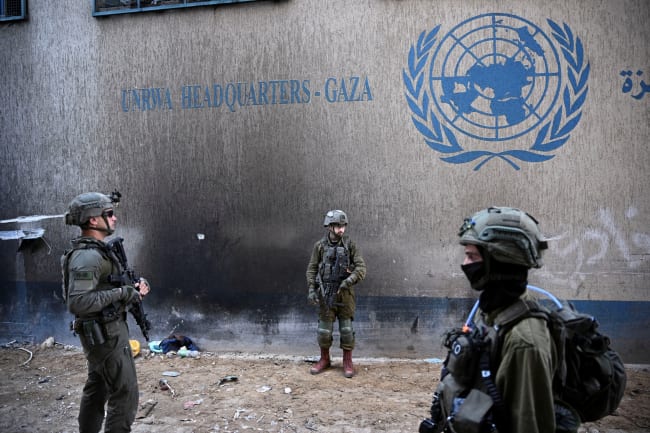Ten days after an Israel Defense Forces (IDF) drone strike killed seven aid workers distributing food with the World Central Kitchen, USAID Director Samantha Power confirmed on April 11 what many humanitarian experts had claimed long prior: Famine is under way in the northern Gaza Strip.
Yet the seeds of Gaza's famine were sown long before these aid workers' deaths and even before the devastating October 7 attack by Hamas. In 2022, 64.3% of Gaza's population was already classified as being moderately or severely food insecure, and 77% of residents reported that all of their family members had reduced the number of meals they consume per day.
Even though Israel's war with Hamas has brought Gaza's population to the brink of famine, Israeli policies that predate October 7 created a food insecure environment that was uniquely vulnerable to this threat. Israeli government officials have emphasized Hamas's role in precipitating the hunger crisis, specifically, its history of diverting aid and stockpiling resources to benefit a select few, but a wide variety of aid groups insist that the biggest challenge to their famine prevention efforts is Israel's military campaign, not Hamas's hoarding of humanitarian assistance.
Farms and Fish
Starting in 2007, after Hamas took control of Gaza, Israel instituted new security regulations that hampered the territory's infrastructure and limited access to food throughout the strip. To protect its civilian population in southern Israel, the IDF carved a thousand-kilometer buffer zone out of Gaza's territory, taking 29% of its farmland out of its normal circulation in one of the world's most densely populated territories. Both Israel and Egypt also enforced a blockade of the strip, and Israel strictly regulated whether items it considered dual use, anything that could have both a civilian and military purpose, could enter the territory.

Those import restrictions kept food items including dates, certain agricultural fertilizers, and materials critical to developing and maintaining infrastructure, such as concrete, out of Gaza. Controls on dual-use items have devastated electricity infrastructure and contributed to chronic energy deficits throughout Gaza, exacerbating food insecurity by making refrigeration unreliable.
Some 70% of water-, sanitation-, and hygiene-related materials also appear on Israel's dual-use list, and, before October 7, less than 16% of the materials critical to water infrastructure were reaching Gaza. Almost one-third of Gazan households were not connected to sanitation systems, and Gaza's sole freshwater aquifer had been overdrawn, the void filled by seawater and untreated sewage. As a result, 97% of Gaza's freshwater supply was unsuitable for human consumption by 2019.
This water contamination, in addition to being the leading cause of infant mortality in the strip, had also driven food insecurity given Israeli restrictions on fishing off Gaza's coast. Israel maintains full control of the waters off of Gaza, and although the exact perimeter has fluctuated depending on negotiations, the Israeli military has set firm limits on fishing areas for Gazans, ranging from 3 to 15 nautical miles. Those restrictions compelled Gazans to fish mostly in shallow, sewage-filled waters and contributed to the persistent overfishing of polluted fish. Even when restrictions were looser, many fishermen did not have boats capable of traversing deeper waters because more powerful engines are also considered dual-use materials.
Hamas made matters worse by continuously prioritizing regime survival over the needs of Gazan civilians. Hamas imposed steep tax hikes on many food items in 2015, 2019, 2022, and 2023 even though its leadership often claimed that these revenues were meant to benefit its civil servants. The group also reportedly stockpiled months of food for its fighters leading up to October 7 but not for unaffiliated Gazan civilians.
Given the plethora of obstacles, two-thirds of Gaza's population depended on food assistance before the war
Given the plethora of obstacles, two-thirds of Gaza's population depended on food assistance before the war.
These challenges existed before Israel's current offensive in Gaza, but conflict has long and consistently intensified Gaza's food shortages. After Operation Cast Lead in 2009, Israel limited fishing grounds to three nautical miles from Gaza's shore, leading to a 47% decrease in total catch. That same war also damaged 17% of Gaza's cultivated land by both bulldozing and chemical contamination in agricultural areas. In 2014, during another outbreak of violence between Israel and Hamas, the Israeli military killed almost 2,000 cattle and destroyed or partially destroyed 10 dairy processors. The total loss just to the dairy sector exceeded $43 million.
Food Insecurity Since October 7
The current war is no exception to this phenomenon but its effects on Gaza's food supply are unprecedented. On October 9, Israeli Defense Minister Yoav Gallant announced that "there will be no electricity, no food, no fuel—everything is being blocked off. We are fighting human animals, and we will act accordingly." During the war's first month alone, 30 food warehouses were struck, along with hundreds of grocery stores. By November 10, water consumption had shrunk by 92% on average across Gaza's population. In December, widespread reports emerged in Israeli newspapers that Gazans were eating shrubs and expired food.
That same month, UNICEF estimated that children in southern Gaza had access to only 1.5 to 2 liters of drinking water per day. The World Health Organization recommends 50 liters per day for basic consumption and hygiene needs, and 3 liters for simple survival.

Even though this crisis was well documented, the Israeli government continued to undermine humanitarian efforts by hindering attempts both to move vital supplies into Gaza and to distribute them. A dual-use list still dictates what materials can enter Gaza. Israeli officials claim that they are not rejecting "anything that is underneath four headlines . . . Food, water, medical supplies and shelters," but aid groups report that Israeli inspectors have refused goods such as tinned foods.
If a single item in a truck is rejected, the entire truck is often forced to queue again with an average wait time of 20 days. Once food items are across the border, distribution problems emerge. Fifty-one percent of planned food missions to high-risk areas have been denied or impeded by the Israeli military. Meanwhile, humanitarian workers such as those from the World Central Kitchen, who attempt to deconflict their efforts from the IDF's by following protocol and informing Israel's Coordination of Government Activities in the Territories (COGAT) of their plans to distribute aid often simply receive a confirmation of receipt, not a guarantee of safety.
This war has been one of the deadliest for humanitarian workers, killing more than 200 thus far. In its efforts to root out Hamas, Israel's military has targeted both Hamas combatants and Gaza's civil authorities, who would normally escort aid workers' distribution efforts. Even though the United States has pressed the Israeli government to cease its attacks on members of Gaza's police force, Israel has largely persisted. In response, Gazan police have stopped escorting these food aid missions, creating a breakdown in civil order that has led to tragedies that include the death of more than 100 Palestinians who swarmed an aid convoy for flour.
In the aftermath of the World Central Kitchen convoy strike, Israel has taken steps to improve Gazan civilians' access to humanitarian aid but, given the scale of the crisis and its deeply entrenched causes, these attempts may not be sufficient. Most famine victims succumb not to starvation but to opportunistic infections that prey on compromised immune systems, which means that Gaza's health system, gutted by Israel's military campaign, is compounding its hunger crisis.
Gaza's health system, gutted by Israel's military campaign, is compounding its hunger crisis
Of Gaza's 36 hospitals, only 10 were still functioning as of early April, and they were operating at 359% of their intended capacity. Clean water is essential to staving off infections such as diarrhea and cholera that can be deadly to those suffering from hunger, and clean water was exceedingly rare in pre-war Gaza. Chlorine tabs, often used by aid workers to purify water, remain banned as part of Israel's dual-use list.
The Israeli government has touted the increased number of trucks passing through Israeli inspections as evidence that the humanitarian crisis is easing, but experts have pointed out that these numbers can be misleading. For instance, COGAT has counted many half-filled trucks as full, artificially inflating the amount of aid entering the Gaza Strip.
With 1.1 million Gazans facing imminent famine, dire food shortages, a dilapidated health system, and ongoing military hostilities, dramatic changes are necessary to prevent thousands of deaths. Even if a peace were reached tomorrow, deaths would continue as those suffering from hunger would remain vulnerable.
Yet just as famines do not resolve overnight, they do not appear overnight either, and this war may have laid the groundwork for future food insecurity in Gaza. More than 20% of Gaza's greenhouses have been destroyed, along with 30% of irrigation infrastructure. Israeli naval forces have also destroyed or damaged 70% of Gaza's boats. Many Gazans who once relied on chickens for eggs and cows for milk have slaughtered them to meet their immediate needs, sacrificing a future reliable source of food.
An estimated 70% of all livestock and other animals in Gaza have died since October 7. More than 40% of all croplands have been damaged; in some areas the damage is permanent and the result of Israel's attempts to flood Hamas's tunnels with seawater, further contaminating Gaza's groundwaters.
Even once the war ends and the tons of rubble are cleared, the underlying soil will wear the scars of this conflict.













